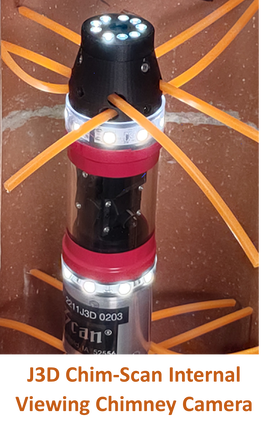 Cleaning chimneys has long been known to reduce the risk of chimney fires. Scanning a chimney flue with an internal chimney camera illuminates the defects in the flue's interior. Cleaning a flue and providing documentation of an internal chimney scan is essential in protecting your customer's family and home. Let's look at some statistics. According to Burn Wise, in 2011, heating equipment was involved in an estimated 53,600 U.S. home structure fires with associated losses of 400 civilian deaths, 14520 injuries, and $893 million in property damage, accounting for 14 percent of all reported home fires (NFPA). The leading factor contributing to home heating fires was failure to clean, principally creosote from solid-fueled heating equipment, primarily chimneys (NFPA). Confined fires confined to chimneys, flues, or flue burners accounted for 87 percent of residential building heating fires (U.S. Fire Administration). This information is available in the U.S. EPA Wood Smoke Awareness Kit. Another source of statistics from NFPA's Home Heating Fires, by Richard Campbell, December 2022 that pertains to 2016-2020 is online. This source features a lot of valuable information regarding statistics with Heating Equipment. A couple of valuable pointers in this documentation echo the points below. These are also Safety pointers.
This information is a reliable source to have. We recommend you download, save, and print these documents. Whether you pass along copies of the documents to news stations, use them in a radio talk show, or include them in a blog with links, this information is vital to our industry. Our commitment to the hearth and chimney industries is so strong that we created the Chim-Scan Factory-Trained Technician Program. We believe all of America’s chimneys should be inspected and video scanned correctly.
0 Comments
Best Viewing Angles for Scanning Chimneys When a chimney has damage, the best way to record this damage is with the J3D Chim-Scan® Internal Evaluation System. It can view straight up or down, sides, and even at angles, which helps determine more about the defects such as misalignment of masonry tiles, rusting, and embrittlement in a prefabricated chimney and in case of a sudden occurrence such as a chimney fire. Some chimney cameras may have a limited view. Some chimney cameras may have non-rotating heads or rotating heads with limitations, stabilizers, image and video limitations, one lighting setting, recorders, and a host of other accessories to provide the means to scan the chimney's interior. You may ask, "Why so many options?" – such as speed and the ability to swivel the chimney camera head to any angle to produce the best image. The answer is to optimize each photo opportunity so you can focus on the defect's details. Clear photos eliminate doubt when you show the homeowner. Options also decrease the time spent scanning and ensure you have the images needed. Time is money! Angles of Imagery One of the most important parts of interior chimney scanning is understanding the optimal angle to capture an image or video. To understand the optimal angles we refer to, it is best first to understand how we refer to them. For reference, when the chimney camera is traveling straight up (or down) the chimney with the lens facing forward (up), we call this a straight-up/down view. A tilted view is when the lens is angled up to 45° up or down. A 90° view would be a side wall view (horizontal). Please reference the chart below for a visual explanation. Each chimney tells a story, and it is up to you to define and share the documentation in a manner the homeowner can understand. The chimney camera position or angle is essential in familiarizing yourself with the new perspective. A 90-degree side view angle produces sharp close-up details of specific areas within the chimney. If scanning from the bottom, such as the hearth or firebox, pushing the chimney camera up using a Lighthouse Tilt or J3D Camera head, you can flip a switch to look straight up or flip again to rotate the heads and orient it to view the sidewalls.
A straight up or down shot or a side shot is rarely enough to make determinations about defects. A 45° tilted lens can often detect what is behind a hole in a flue tile or mortar joint. A tilt lens helps with pictures of damage or defects in prefabricated chimneys. Having a camera with multi-angle abilities is key to producing the best inspection documentation.
 A chimney inspection involves peeling back many layers of investigation, almost like peeling an onion. Just as each layer of onion is a leaf that helps feed the plant, each part of the chimney investigation peels back another layer, revealing transitions and potential defects. Just as every onion is unique with its number of layers and thickness, each chimney is unique and differs depending on many factors such as type, fuel, usage, construction, etc. If you could build your inspection, where would you start? The first consideration we could start with is the type of chimney we will inspect. Does it fall within one of the following categories?
 Peel another layer back and look at more specifics:
The next layer could be appliance specifics such as:
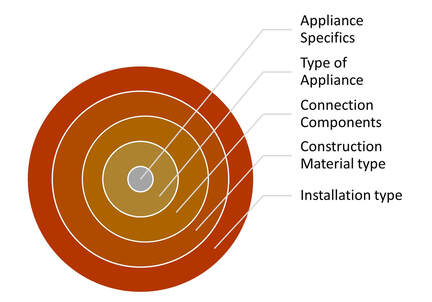 Depending on how far down you want to peel the onion, we have modules available to peel right down to the core. What you find within the first couple of layers usually determines how far you need to go with each layer, peeling back more evidence regarding fireplace and appliance use and how the products of combustion reacted as they entered and passed through the chimney. Whatever your desire in an inspection process for documentation, we can create it. Whether it is a Level 1, 2, or 3, we promise your eyes won’t water when you see the cost. Estoban Practices Positive Sustainability The Estoban Corporation, the manufacturer of the Chim-Scan® Internal Inspection Systems, has practiced sustainability for over 38 years during the life of its business. “We manufacture products right here in Iowa and have always repaired what we sell” states Shelley Urban, a 2nd generation owner. “We repair or update a piece of equipment until we can’t anymore. We update equipment for customers and make repairs instead of asking them to purchase a new product or a large part for the product. We track down the problem and repair the part that is broken. It’s important for us to keep our products in the field up and running so companies can keep working”. When a camera system has exhausted its usefulness and is no longer worth upgrading, Estoban recycles the old pieces. In addition to the strong commitment to recycling and repairs in manufacturing, Estoban takes other measures to save on energy. All our lights are energy-saving bulbs. This provides a brighter quality of light and makes our employees working environment pleasant. Another energy saver is 90% of all the rooms have 2 or more windows. This gives us the option to turn the lights on only when we need them. Plus, windows in work areas have shades to help keep the hot Iowa summer outdoors. In keeping with Tom Urban’s industry origins, the shop and office are heated with an outdoor wood furnace. During the winter months, it’s not uncommon to hear a chainsaw as Tom steps out to cut up more wood. When it comes to equipment, LED Lights were implemented into the camera design around the turn of the century. Recently, Drill Battery Pack Adaptors were added as additional power sources for the Controller/Monitor. We can install this adaptor for Milwaukee, DeWalt and Rigid. Have something different? Just ask us. Twice a month, you will find Esther and Ray gathering boxes, scrap materials, and other products to recycle. We even recycle printer cartridges which are doomed to contribute to landfills and take 1000 years to decompose. “It’s important for us to minimize our footprint and leave our legacy in other positive ways. The most recent eco-friendly project has been the investment in 3-D printers. With these printers we create and manufacture several of our parts, the waste is minimal, and it saves on shipping and fuel. An important part of Estoban’s positive sustainability plan is the employment of several local people. Because parts are made in-house, repairs and upgrades are easier and are a part of life. Estoban employs several local people with part-time and full-time jobs. “In the end, it’s all about people and sustainability regarding the quality of life on our planet. It gives us pleasure to do our part not only from an eco-friendly point of view but also giving back to our community” says Shelley Urban. “When the sun goes down, we feel good knowing we did the best we could”. Thoughts from the Scanman
It's Fall in America again - children are back in school, Friday night football games, hot chocolate, and the smell of fall is in the air. Fall is the busiest time of the year for the chimney sweeping trade. It includes long days, cramped schedule books, and ordering supplies. For us in Iowa, it's harvest time; our neighbors are operating 24/7 running combines, and tractor-trailers filled with the grain are on their way to the Mississippi to load the barges heading out for export. Living in the Midwest grain belt seems like a funny place in relation to the chimney industry, but we have been in Iowa over 30 years from our Pennsylvania roots. Since 1978, I have been in all aspects of this industry, from a fledgling sweep in northeast Pennsylvania to the owner and operator of an interior chimney inspection camera and accessory manufacturer that sells equipment worldwide. I still remember the Mass. Guild meetings at the Lennox Inn! To this day, I still hold and retest the CSIA certification test. I have taken the test(s) 14 times. My certification number is 210, but I'm still in the field at heart! We have provided vision to thousands of chimney, masonry, and HVAC companies. Keeping up with technology Since 2014 Estoban went through an extensive change in operations and product design. What we used to make with the shears, snips, drill presses, and manual lathes, we now manufacture with CNC machining centers and lathes. This computer-operated machinery allows us to create older parts in half the time, plus replacement parts are guaranteed to fit. We liked how well the new CNC machine worked that we bought two more. One was identical to the first machine center, so we had a backup if one didn't work. Sure, enough, one part of the machine did go wrong, but we didn't miss a step. We have offered inspection equipment to fulfill many of your needs through all the ups and downs. Our mission statement has always been to provide quality imagery and support for our customers and continues 33 years later. With continual improvements and YouTube videos helping owners with company training, meetings on using the cameras are growing. We are just finishing a new 4000 sq. ft. shop addition to help with our expanding needs. Beginning with an End in Mind One area of business that all of us need to address is creating an exit strategy. My wife Esther and I started working together shortly after we were married. In 2004, one of our customers stopped by our shop in Iowa. He and his brother relied on the Chim-Scan to generate new work, and the cameras were a major part of their company. He wanted to know our plan after Tom and Esther were no longer working? Gee, we had been so busy designing better products for everyone we hadn't taken the time to think about "retiring" or a catastrophic health event. So, we started looking at what options would be available. Sell the company; hire middle management, etc. We hired business advisors who helped us formulate a plan. Yes, this is expensive, but they brought many ideas to the table that we had not thought of. As we set forth a plan, we hired them back three times over the next ten years. Each time they gave us new goals and projects to work on. First, we had to decide what retirement looked like? We enjoy what we do and who we work with. So, we made a conscious decision to simply work fewer hours and hire good people who could run the day-to-day operations. We took a week off to try it, and when we came back, we fixed what didn't work. Then we tried for two weeks. Again, we fixed what broke. That meant writing the dreaded S.O.P. etc. We found that power points work great for SOP writing. Set the copy, add a photo, then the next step. The great part is they can be printed and placed in notebooks or put on Microsoft 365 to share and update them when needed. I highly recommend a LEAN process called Streaming. Take post-it notes or 3 x 5 cards and go through each step of an operation. Lay them out on a table with all persons within the company watching. Then see if all agree on the steps or the need for more post-it notes or cards. Then align them in a sequence to reduce time and waste. Only the persons involved should do this for their department for larger companies. Then departments share their results with other departments to see if things align with the company mission. We have found through trial and error that big expensive relational database programs require rigid rules to keep them going properly. (YOU NEED I-T PEOPLE) After a while, you wonder if the dog is wagging the tail, or is the tail wagging the dog. We now operate on two programs, QuickBooks and Microsoft Office. Period! The flexibility to do some operations are easier in these programs than in a total package system. We even learned how to use QuickBooks as a database for all the language used in our inspection program. We can write an estimate that looks like an inspection form, either level 1 or 2, with over 350 paragraphs stored in QuickBooks! Regarding MS Office, SOPs, PowerPoint, Excel for production purposes, and Publisher for documents. I still believe in Leonardo DaVinci's saying, "Youth should be taught perspective then Proportion." It's a big world out there; at some point, you need to figure out who you are and what makes you happy. From there, work on the proportions needed to make your dream come true. When you reach this point, begin the measuring process needed to fulfill that dream. Until you set up the systems to measure it, your dream can stay just that, a dream. LEAN training and streaming really help in this area. Reinventing ourselves Our daughter decided that there were opportunities to join the company in 2010. Shelley is now our office manager; after working her way up thru wiring, repairs, purchasing, and customer service as far as our other employees have been here, 29, 15, 8, 5, 2 years and one that just started six months ago. Also, the other protection needed was to purchase Keyman insurance on principles within the company. Again, another failsafe to be sure of continued support for our customers. Once we had our plans in place, we realized that many of our customers would need to think the same way. Some companies would simply stop working because they never set up their exit strategy. Others had family members who would like to continue the business. Our equipment was now such an important part of many companies' daily work. The question is no longer why I need to buy a Chim-Scan, but how can we make sweeping and scanning easier, quicker, and less stress on the sweeps body. As with every trade, the tides of change are on the rise. As some companies grow, others are starting to retire. Some will leave with a legacy; others just close the doors. As we attend various trade shows, it's comforting to have our older customers come to our booth to introduce a son, daughter, or partner who will take over the business. It's interesting to see new and old companies begin to grow way past the expectations of many, sometimes even themselves. They now have segmented operations, field personnel, staff meetings, human resources, marketing plans, and operations managers. It's a far cry from the top hat and tails, "sweep your chimney for $40.00 with the big red vacuum". And the goal then was to make van payments repay student loans and mortgages. Maybe this is too much organization in your life? Maybe just enough. You be the judge. I know many 1-2 truck operations that lead a life they feel comfortable with. Others aren't comfortable until they reach 25-50 trucks with a goal for the stock exchange. Making Sweeps Life's Easier We looked over the data we collected to find what part of the equipment needed the most repairs. We realized that most companies were not using the centering device to protect the camera and that the cables were most vulnerable to damage. In 2013, we created the lighthouse camera with its 360-degree, continuous variable-rate pan camera to help prevent cable twisting and stop the operator from having to twist their wrists all the time: no more twisted cables, and easier on the operator's wrists. Plus, the add-in cable reeler corrected cable storage problems. When we added the Enviro camera to view straight up, this combo camera system included the stabilizers. As we tested this in the field, we created a way that sweeps could look straight up the flue (viewing offsets, misaligned liners, crack liners, and blockages in real-time) as they went up the flue. They could switch to cam 2 and view the side walls (open mortar joints, cracks in liners, missing liner sections) as they pulled the camera back down the flue. We then stored these two cameras and the attached stabilizers in their own caddy. All the sweep has to do is connect the 50' cable, and they are ready to scan. Plus, we make the adapters to any rod system you currently have, no more switching rods! This rugged two-camera system cut the scanning time in half, yet you can see twice as much of the flue's interior. Even though one liner crack can justify a repair or reline, scanning the entire chimney appears to be a waste of time for some sweeps. By 1985 our Pa. sweep company had placed in 260 liners. I have stories of liners not fitting, a stainless boneyard, and all the headaches involved in NOT scanning all the chimney to see what was down there to hang liners up! With this system, in the time spent looking for one crack or defect, I can have the entire flue scanned and recorded in video format or still Jpegs. The lighthouse combo camera answered many of the repair issues that we had, which increased reliability and reduced downtime. The lighthouse camera has an acrylic lens cover, for easy change out in the field. Also, a replaceable flexible shaft between the two cameras allows easier access up thru a thimble chimney and prefabricated fireplace dampers. Also, the newly designed stabilizers can be easily fitted in the field. Now, in 2017, we wanted to address the safety and fatigue of our customers. So, we accomplished the goal of reducing camera repairs, stopping twisting rods in your hands, offering better vision through better resolution; use specialty adapted LED lights to create a full spectrum light array. Plus, our goal was to build a camera for our newest product, "the Raptor: so that sweeping, and scanning could be accomplished at the same time. All concepts are designed for the consideration of the chimney sweep's time. Roll in, set up, sweep, scan, use the Flue & Hearth notes as your checklist, so when it is time to be with the customer, you are ready and have collected the information necessary to explain your findings in Level 1 or 2 inspections. The Flue and Hearth Notes™ are segmented so that you can direct the customers' attention to a certain area of the chimney to reduce confusion and promote trust. By segmenting the inspection, we found out how much faster and more complete inspections could be done and how many new opportunities were created. By going through the checklist, all the defects are noted and operational. The uniformity provides the office or manager with the same info as the sweep sees. (Collect data, train techs, engage managers, create a uniform platform to measure in one step). We have our own system we have used for several years. The checklist gets the data; QuickBooks with 300+ paragraphs have the explanations. The Flue and Hearth Notes™ is available in a paper triplicate form or use the fillable PDF to use on a computer, Android pads, or IPads. We have not done articles for some time, to the point there are industry rumors that we are no longer in business. It takes time to walk the walk and place these changes into place and make them operational. This family's business plan has positioned itself to be here another 35 years. The other rumor concerning that Chim-Scans cost over $5000.00 is also exaggerated. With the process of high technology machine works we now offer units starting at $1995.00. Check out our website: www.chimscan.net Text photos or questions to cell phone 641-919-4896. We have full-time personnel answering the phone from 9:00 C.S.T. to 5:00 p.m. Esther, Shelley, and I want to thank all of you who have placed your trust in our products. As Red Green would say," if you can't be handsome, be handy. And remember to keep your stick on the ice!" Have a great holiday season. Take Care. First, we have a wireless unit that works quite well as far as wireless goes. The signal can go through 3 walls and up to 150 feet away.
But just when I am ready to start a production run, the FCC has placed a wattage limit on all wireless units to fit part 15 of the code. So, for now, the best I can do is about the same power as blue tooth without requiring an amateur radio license. The FCC is planning to enforce this rule this fall. How may you ask? I don't know. But the fine, if I sell this type of equipment, is $7,5000.00 per occurrence, without the end-user having the license. So, if you are happy with the Bluetooth cellphones range, I can match it. But if you would like to "see" farther, it will require a license to run one. Plus, as an amateur, you cannot use it for commercial gain under this ruling. That's another fine. But this will find its way and interpretation with every attorney you consult. There are attorneys already adding this litigation to their list. No matter where the earth has a hole, somebody has a bucket!! Because of the quadcopter phenomenon, the FCC and the FAA are planning to enforce this very soon!! The suppliers I've communicated with tell me that this is very real and that I should not risk any sales without proof that you have the license. They are also downsizing the wattage to help comply with the ruling, with regret because the range sucks!! So, at this time, I'm not sure where to go with this "wireless thing." Since the Go Pro and all the consumer cell phones are available for $200-$300.00, that may be a choice for those that want to deal with consumer electronics. There is no backup, no customer support, constant changes, and cheap equipment that people tell me, 'It's the bomb.' Now I know how you folks feel like when a customer comes to your store. You spent time educating them about what they need, and then they go to a big box store and say that your prices for your stoves are too high and that the value is the same?? Whatever! To address the changes in the industry, we have been selling the lighthouse camera. No rods to turn; the camera goes around on its own, Stop and reverse when you want to. Even color corrected light source, no hot spots, on a cable that doesn't need a license and can give you a good high-res image 300 feet away if you need to. Plus, we back our products with answers to your e-mail and questions at night, we support your industry events, and give back to customers in the way of education as much as possible. We can upgrade older equipment by adding the necessary switches and updating the SD recorders to accept the EYE-FI cards. Because the rods don't have to be turned, the cable comes out of the slip ring reeler (series 200 and 450) and goes up the chimney. Coming down, it falls to the floor, where you wind it up on the reeler. NO MORE TWISTED CABLES!! With the CeCure camera/Enviro-flex camera on top, you can look up the chimney, see where you are going, and get a bird's eye view. Then, flick a switch and change the view to the Lighthouse where the camera rotates 360 degrees to see the joints—two incredible views at one time. We can now offer this for less money than the Auto Focus Tilt cameras and half the size and weight!! With these changes, the system can now accept a viper system, so those operators that want a seamless rod can do so. With the advent of the EYE-FI card sending the images right to your I-devise, you can send them to your paperless report. The snap button on the controller is fast enough to capture the image without stopping the rotation, and with the keyboard, you can enter the client's name on the photo and any short message or description you want. The series 200 and 450 that can use the character generation keyboard, characters stay with the image as it transfers through the EYE-FI CARD, SO SHORT DESCRIPTIONS STAY WITH THE IMAGE………HOO….AH. (Not shouting, just excited :)) We are not the same camera company; our product line is an ever-evolving process, and we are taking it to another level. So, in a nutshell, this is where we are, *Full view, 360 degrees, and above imagery, *Fewer rod connections yet more choices of rods to use, *Capable of image transfer to digital devices, *Lighter weight, smaller size (2" round) to fit through prefab fireplace dampers and thimble chimneys, *Able to be used for prefab chase inspections (CeCure and Enviro-flex models- 1.5" hole) *Add photo descriptions to your imagery for easier documentation and photo admin *And the ability to use earlier models and upgrade them. *Plus, you can pair the Lighthouse with the Enviro-flex and get two views, all with the flip of a switch. It’s amazing what can change in a few short seconds.
I was sitting at my desk reading the February issue of Sweeping that had arrived. On page 23 was a picture of someone with their arm bandage. The headline read, “Unable to work due to Injury or Illness. The article was written by a supporter of this industry and someone I would call a friend, Brian Noe. We were introduced to him at a Mix meeting. I hate to be the “poster boy” for this article, but I thought I would share what proceeded to happen minutes after I read the article. Monday, March 3, 2014, we had record temperatures all across the Midwest, and it was minus 13 in Fairfield. We had turned the new condensation furnace in our pole barn that contains our chimney lab and extra tools that we do not use every day to OFF. We did this when propane reached over $5.00 a gallon in January because if we are not working in that building, there is no sense of heating it!! WRONG, a high efficiency, a condensing furnace is full of condensate. It freezes if you turn it off and won’t’ work- DUH. As I waited for the furnace guy to come and help thaw out the furnace, I went back to the office. Esther, (my wife) went to fix lunch and left me at my desk reading emails, getting ready to call a customer, and thinking about our booth at the upcoming convention. We all get interruptions throughout our days, but I need to prioritize better. An employee mentioned that we needed some special pieces of plastic cut for a unit. I don’t like “the girls” to use the table saw, so I jumped up to cut them quickly while lunch was getting ready. Of course, the table saw is in the “cold” building. So, I couldn’t wait for the furnace to thaw (so I thought). It’s COLD, so I left my gloves on, not thin tight-fitting gloves, but the insulated ones I used to chuck wood into the outside furnace. It happened so fast. It was the last piece to cut, and the saw blade simply grabbed the edge of the leather and pulled my thumb into the blade. I’m a very fortunate man. 1. It only cut the end of my thumb on my predominate hand. 2. The intense cold did not allow my hand to bleed. (Esther was glad not to have to clean that mess up. As I left the building, I had my wits about me to go back and turn the saw off. I didn’t go back into our shop; I didn’t want to interrupt the employees. I know at least one would have fainted at the sight of the blood. I got into our home and called to Esther, “Get your coat.” Where are we going? To the hospital. OMG. She was cooking lunch and was not pleased to turn the burners off halfway thru. After delivering me to the emergency room, Esther called Shelley, explained where we were, and made sure everything was turned off!! The E.R. is less than 7 miles away, mostly 4 lanes. (We live in the country, but the bypass is nearby) X-rays showed that the bone between the knuckles was shattered, 3 breaks, and the pad was minced back to the first knuckle. Now, if it had been another finger, we may have opted to amputate. Even if it had been the left hand, maybe…. but since I’m right-handed, the doctor had a plan. Side note, who knew that our small town of 10,000 would have an orthopedic surgeon with his office at our hospital? He is also a leader in the procedure I’m about to describe. We are so grateful that we did not have to travel to the University Hospital 70 miles away. After evaluating, Dr. Ivan scheduled surgery for 3:30 in the afternoon. After putting 4 pins in the bones to hold the thumb together, he cut a flap in my abdomen and pulled the flap up around the wound, and secured it in place. He placed another “stitch” using a 100-pound test line to secure my wrist to my side so that the arm/hand did not move. They wrapped me up with two six-inch-wide ace bandages to hold my arm to my body. I finally got to a room about 6:45. Pain meds kept me pretty drowsy, and the doctor said that we would know after 24 hours if the “flap” would survive. The next day, by the Grace of God, when they changed the dressing, all were pink and looking like the Doctor wanted. They sent me home with antibiotics and pain meds. The doctor was impressed that at the age of 59, my blood pressure was good, no diabetes, and I was a nonsmoker (except maybe a cigar when Shelley was born 26 years ago). He said I was in good shape for the shape I was in. And that the little bit of belly fat was a great place for my thumb to heal. So instead of the original ER timeline of 3 weeks, we should be able to unhook the thumb so that I can go to Columbus for the convention. Now to make a long story short, about ten days later, we plan to “unhook” my thumb and wrist from my side. Then another 4-6 weeks for the pad to grow and heal. Then, another surgery to reshape the thumb and healing starts again. This procedure is very old; the countries of India and Saudi Arabia pioneered these hundreds of years ago, according to the doctor. They would use big biting ants to secure the flap. They would make the ant mad, make it bite, then tear the body away and let the bug secure it. I’m sure animal rights groups would not be happy about that these days. The body is amazing and can heal itself with a little help. I appreciated all the calls, comments, prayers, words of encouragement, good vibes, white light, etc. I can feel the good vibrations and thoughts for my family and me. Remember; take care of yourself, good food, and exercise. We all work hard, and it’s easy to pick up fast food and be too tired to work out. But my fast healing tells me it’s worthwhile to eat healthily and take daily walks, bike rides, etc., before or after work. Nobody can do that for you. Be good to yourself!! So, to get back to Brian’s article, make sure you have the insurance you need to keep you and your family going when an accident happens. If you don’t’ think you can afford it, raise your prices. It’s not IF an accident will happen, but WHEN. Side note; as an S-Corporation, Esther and I could have opted out of paying for workman’s comp on ourselves, but we didn’t. The battle now will be between blue cross and blue shield and workman’s comp as to who will be the hospital bills. Make sure that you take time for a vacation and get rested so that your mind is clear. It’s no time to ”multi-task” when working around power tools. I think I can convince Esther to buy me that new table saw that shuts off automatically if skin comes in contact. We saw it at the “New Yankee Workshop” a few years ago. The $2500.00 price tag would have been much less than these hospital bills!! I’m also blessed to have great employees. We have worked for years, thanks to Dave Pomeroy (God rest his soul) for getting us started and other business coaches to have our “S.O.G.’s” standard operating guidelines in place so that our business can continue without my daily input. Don’t be afraid to ask for help in your company. No one expects you to have all the answers. You may know chimneys, but you don’t know what you don’t know until you are open yourself and your company to review. The Mix meetings have helped many understand that. The convention is coming soon; take that time to talk with other companies and be open to other options. Just because you have done something for years the same way doesn’t mean it can’t be improved. You are not the same person you were when you started your business. Laughter is the best medicine, so they say! So let the jokes begin. *I’m thumbing thru the same “Sweeping” again, and I see an article from Jerry Isenhour’s “The Coach’s Corner,” titled “Fire in the Belly.” Who knew?... signs everywhere. *Did you hear about the butcher, who backed into his saw? He got a little behind in his work! *Part of the healing process requires changing the dressing on the wound and keeping the “flap” area moist. Sort of like the Thanksgiving turkey; we don’t want to let any of the areas dry out. So, a cousin called and wondered if it was time to go baste Tom!!! *At Ash Wednesday’s Mass, Esther came home to tell the readings were spot on. As we begin our yearly Lenten practice of prayer and fasting, Jesus especially calls us to give to others without expecting a return and to give to others without letting our right hand know what our left hand is doing. Tom thinks he can easily handle that one. Our priest, Father Nick, visited the sick last night and smiled when he saw how appropriate that reading was. *Of course, many have suggested that I find a better way to “give up doing dishes” for Lent. *A card from family arrived today wanting to make sure we had followed our mother’s daily orders of making sure we changed our underwear in case we had an accident!! *My sister and brother-in-law have been sharing funny thoughts from Arizona to help lighten up the situation. *At least the chimney sweep did not have a chimney fire!! *For a while now, friends have encouraged me to write more, i.e., articles, blogs, etc. So, thanks for reading to the end; I will try to follow that good advice. And yes, Tom Thumb will be ready to give his talk on Wednesday after lunch in Columbus. Be there or be square. After reading this, you won’t have to ask why my thumb is all bandaged. Next time, be careful and keep scanning those chimneys, Tom Urban, Scanman. Wow, lots of conversation. Let me explain my intentions about prefabricated chimney chase inspections. This is my experience doing this work on subrogation cases concerning prefab chases. I started to write a response, but it went on way too long. I've done this work since 1994, and the last was in California in 2013, so I have some history doing it. If you are interested in learning how I do them and my answer to your questions concerning entry holes, getting around inside the chase, dimensions, lighting issues, borescopes, firestops, etc. Keep Reading. 1) Yes, in my opinion, it is a level 3 inspection 2) Intended Purpose: If your intentions are replacement of the existing unit, it would be helpful for a chimney contractor to “see the interior” before setting a saw-z-all to it. (Electrical wires, gas piping, water pipes, etc.) 3) What is real: All of us understand that prefab chases especially track homes, are done by the lowest bidder; therefore, corners are likely to be cut. So, if your gut is telling you something doesn't look or feel right, you have the opportunity to offer a selective service to evaluate the interior without destruction. (Especially if chase covers are sealed well.) 4) Experience: I did 45 such inspections in the state of NJ several years ago and went through the side shoulder, through vinyl siding, and in some cases through the shingles on the roof near the chase to inspect these areas. I can tell you there were many things covered up that caused hidden water issues within these homes, along with a worker stuffing their lunch bag and hoagie wrapper right behind the firebox, so it was in direct contact with the unit and the back OSB wall!! 5) Experience: I also have experience with Randy Brooks in California (45 units). We took many photos to see the areas around gas lines, outside air, and critter presence. Check with Randy on his take about doing them. 6) Dimensions: As far as taking dimensions, the camera is under 1.5” in diameter, so a 1.5” hole saw will allow the camera to pass. Plus, you can bend it with a gooseneck rod so reaching around the chimney pipe can be done. Since the camera is 1.5”, I use that as my measuring device. If the camera can go through an opening between combustible and pipe with wiggle room, then in most cases, the chimney is 1.75” to 2” away from any combustibles. The same with fireboxes. Plus, in most cases, the manufacturer has instructions on the side of the unit, especially sidewall clearances. 7) Firestops: Should you find firestops (past experience tells me not too many), then your inspection can only go that far, and another entry point might be a consideration. Again, it will go back to how bad you need to see?? Since this is a level 3, there is some leeway on this. That’s why I made an inspection checklist so you can tell the customer what you saw and what you didn’t see. 8) Operations: I place the unit on the roof or chase top and drill the hole into the chase. Then attach the camera to one or two rods and lower the camera cable and rod into the chase. When I reach the top of the firebox, I’m looking directly down. There is enough light from the LEDs to illuminate the area. I check the sides of the firebox and clearances, insulation (or lack of), outside air, gas line entry, and other supports. When you need to look at a 90-degree angle, I push the camera into the firebox and bend the gooseneck. When looking for clearances around chimney pipes, it can be done along with a closeup of the mantel support or creative use of 2x4 construction. 9) Borescopes: I have one from Dewalt that works through a ¾ to 1” hole. Works great, but my light is limited to only a few inches around the head, so positioning the borescope can take a while. It has a place but don’t expect it to illuminate a chase!! 10) Sealing: Usually RTV on the chase around the hole, then a 6x6 alum plate with six screws, then cover the edge with RTV silicone. On wood siding under vinyl, same 6x6 sheet of alum. With six screws. In masonry, stuff the hole with some ceramic blanket then mortar over the top. (Not sold on that one, but it was the best I could come up with at the time.) I use a wonder bar on roofs to pry up a shingle tab and drill the hole. When done RTV around the hole and slide plate under the tab, put a dab of RTV on the underside edge of the raised shingle and press down. Also, there is a company that makes a 1.5” plug out of chrome steel which looked interesting. Plug the hole and add RTV Silicone around the plug, and you're done. The funny part about being a chimney sweep is you have to deal with the public, and if we don't, we don't have a job. We must remember their wishes and understand our responsibilities to the NFPA 211 Levels of Inspection. Somewhere in the center is a place that requires some training. It was a start to go to Dale Carnegie Sales Advantage class. This is where my eyes were opened to the techniques, we need to persuade the customer that the inspection with the sweep is in their best interest. And the best way to do that is to shut up and do the job.
People don't care how much you know until they know how much you care. If you run across someone who just wants it swept, then do the normal job you normally do, follow the standard of care by doing level 1, hand them the results, and smile. They are telling you that they don't want to talk to you about it until you demonstrate how much you care. You need to show them your care. My daily sweeping days are over, but the ones I remember that gave me the hardest time usually became a great customer, just by being quiet and doing my job. Sales training is now an ongoing training for my staff and me, and the start at Dale Carnegie was great at the time. For a chance to get some free advice from a pro, check out Jeff Gitomer's website. He has some bullet presentations that can be done in minutes and gives you a chance to score yourself on how you absorbed the material. The site is open 24/7, so the late-night in your jammies meeting can happen. Just go to the site, and when it asks for a member number, put in 2078. That should open the program and let you see all the short bullet questions on proper selling techniques for free. Remember, be quiet, do your job as set by the standard of care for the industry, do your company sop for sweeping this type of installation, present them the information, smile, and move on. That’s one way to service a hard head. Check out Jeff's site for more. I know more salespeople who get training constantly are usually calmer, collected, and smile more than those without, just because they understand the customer’s needs and see them without antagonizing them. Take you out of the picture and put them in. Thanks for taking the time to read this post and have a great day!! Also, check out this company if you want some inside the industry but outside your company help. http://www.chimneyandventingconsultants.com/ When Chimney Scanning does it really matter if I see holes and gaps between chimney liners? (YES!)6/18/2013
|
AuthorTom Urban has worked in the Chimney and Hearth industry for 40 years. He's been an inventor and manufacturer for 35+ of those years. Archives
October 2023
Categories |
Copyright © 1984 to 2024 Estoban Corporation. All rights reserved.

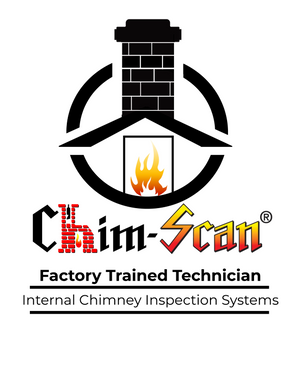
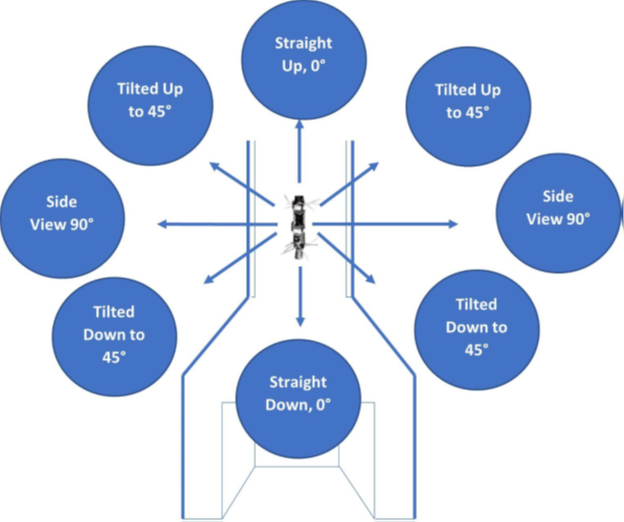
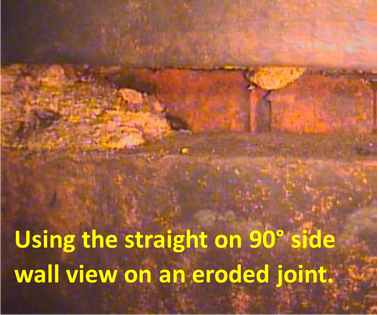
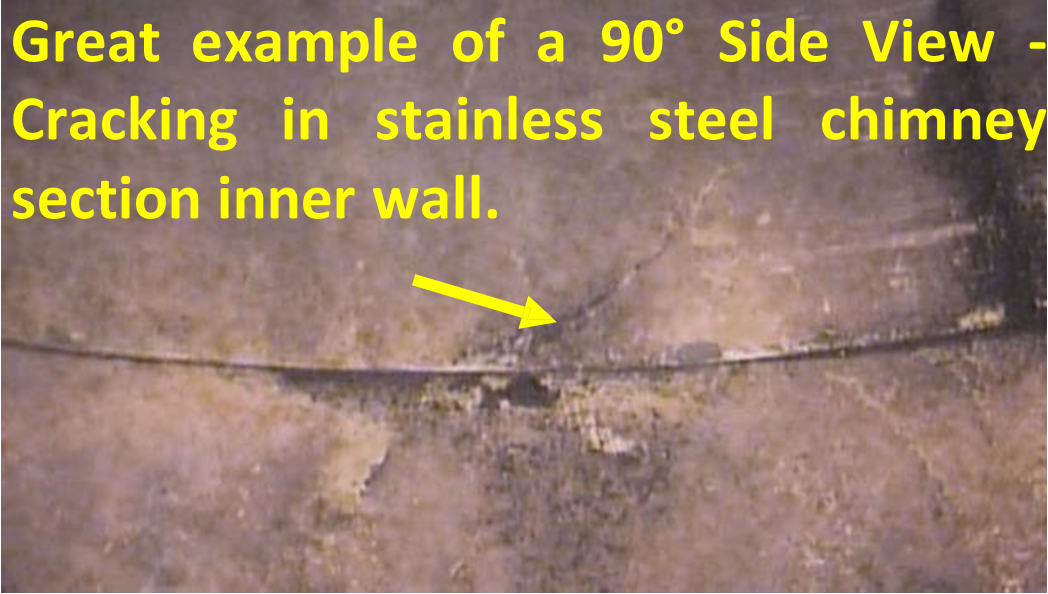
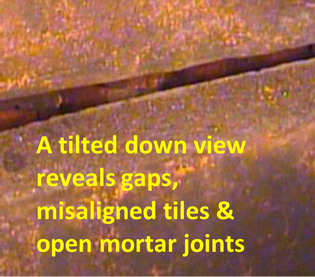
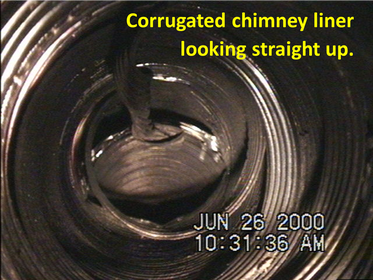
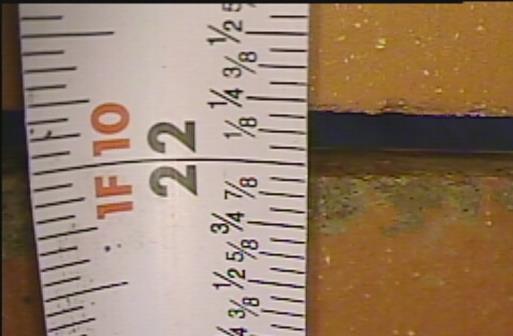
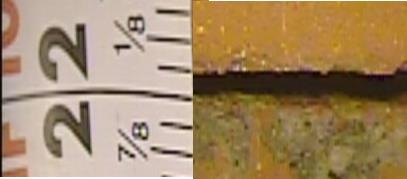
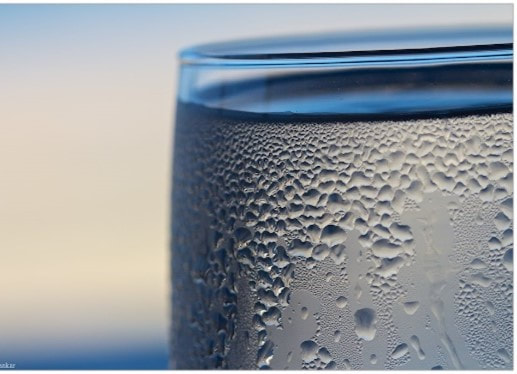

 RSS Feed
RSS Feed